LGBTQIA+ (an inclusive term that includes people of all genders and sexualities) Pride Month is celebrated each year in the month of June. The commemorative month recognizes the impact that LGBTQIA+ individuals have had on history and culture in the U.S. and around the world.
Until recent years, contributions to medicine by LGBTQ+ physicians and nurses were rarely documented, let alone celebrated. The lack of knowledge and the medical contributions of these physicians is partly due to the lack of data collection on the sexual orientation, gender identity, and expression. It is not surprising that, even if asked, the possibility of harassment and discrimination in the workplace hinders some LGBTQ+ healthcare professionals from fully divulging this information.
For many years, openly LGBTQ+ physicians faced backlash to their practices, ostracization from colleagues, and denial of opportunities. Despite these hardships, they continued to fight for change in the field of healthcare and make discoveries that would go on to save thousands of lives.
This June, we want to honor 5 LGBT+ pioneers who changed healthcare.
Dr. Sara Josephine Baker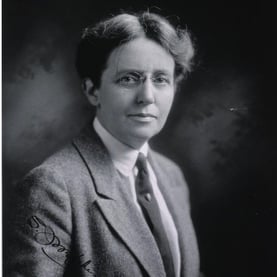
Dr. Baker was an American physician famous for her contributions to public health in the inner-city immigrant communities of New York City and was the first woman to earn a doctorate in public health from New York University and Bellevue Hospital Medical College (later the New York University School of Medicine).
In 1917, she noticed that babies born in the United States had a higher mortality rate than that of soldiers fighting in the first World War. With this she turned her attention towards combating issues facing children and newborns in impoverished communities that lacked proper hygiene education. She established the first government-controlled child hygiene department, which led to New York City having the lowest infant death rate in any American or European city by the time she retired in 1923.
She also developed programs such as and the Little Mothers Leagues, which trained young girls who were responsible for the care of their siblings (while their parents went out to work) on the basics of infant care. She retired to New Jersey with her life partner, novelist Ida Wylie until her death in 1945.
Dr. Alan L. Hart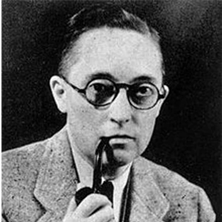
Dr. Hart was a novelist, physician, radiologist, and tuberculosis researcher in the early 1900s. In 1918, he became one of the first trans men in the US to receive a hysterectomy, and he lived the rest of his life as a man.
Pioneering the use of X-Ray photography as a method of tuberculosis detection, he was essential in the development of tuberculosis screening programs at a time when TB was the deadliest disease in the country.
Using the X-Ray systems developed by Dr. Hart, United States doctors we able to cut the death toll down to one-fiftieth from previous levels. Because of these screenings, doctors were able to treat patients before they had complications, and since tuberculosis is an infectious disease, they were able to separate TB patients from others to stop the spread. After retirement, Alan Hart lived the rest of his life in West Hartford, Connecticut with his wife Edna Ruddick, before passing away in 1962.
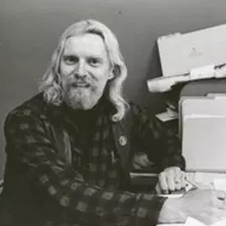 Bruce Voeller, PhD
Bruce Voeller, PhD
Bruce Voeller was a biochemist, gay rights activist, and pioneer of AIDS research. In addition to being one of the first scientists to study the disease, he also named it—and died from it. Prior to his involvement, the disease was known as GRIDD (Gay-Related Immune Deficiency Disease) which Bruce suggested was both inaccurate and stigmatizing to the LGBTQ+ community. He suggested changing it to AIDS (Acquired Immune Deficiency Syndrome).
He went on to become president of the New York Gay Activist Alliance and a year later, founded the National Gay Task Force (now the National LGBTQ Task Force), the first gay rights group to meet at the White House to discuss policy related to gay and lesbian Americans.
In 1978 he helped found the Mariposa Education & Research Foundation to study human sexuality and related diseases. He lived in Topanga, California with longtime companion Richard Lucik until 1994, when Bruce died of AIDS related complications.
Dr. John Ercel Fryer
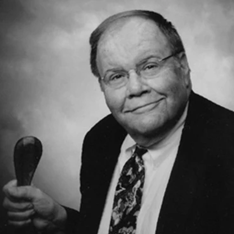 Dr. Fryer was a psychiatrist and gay rights activist who is often listed as the first gay American psychiatrist to speak publicly about his sexuality. He is most famous for his anonymous speech at the 1972 American Psychiatric Association (APA) annual conference where he appeared in disguise and under the name Dr. Henry Anonymous. At this time, homosexuality was still listed as a mental illness, a sociopathic personality disturbance according to the second edition of the APA Diagnostic and Statistical Manual of Mental Disorders (DSM-II).
Dr. Fryer was a psychiatrist and gay rights activist who is often listed as the first gay American psychiatrist to speak publicly about his sexuality. He is most famous for his anonymous speech at the 1972 American Psychiatric Association (APA) annual conference where he appeared in disguise and under the name Dr. Henry Anonymous. At this time, homosexuality was still listed as a mental illness, a sociopathic personality disturbance according to the second edition of the APA Diagnostic and Statistical Manual of Mental Disorders (DSM-II).
At the time of his speaking, Fryer was on the faculty of Temple University, but did not have the security of tenure, so he was in real danger of losing his career if he had been identified. This event has been cited as the key factor in the decision to de-list homosexuality as a mental illness from the DSM one year later, in 1973. Dr. Fryer then became a professor of psychiatry, and of family and community medicine. He specialized in the treatment of drug and alcohol addiction as well as in death and bereavement until he passed in 2003.
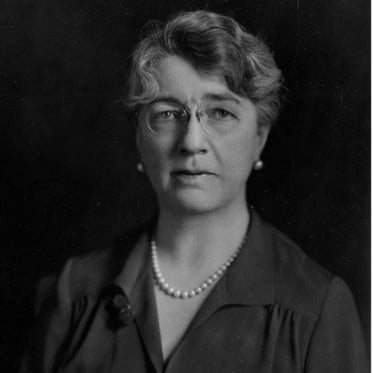 Dr. Louise Pearce
Dr. Louise Pearce
Louise Pearce was a physician and pathologist, and one of the foremost female scientists of the early 20th century. Her research led to a cure for trypanosomiasis (African Sleeping sickness) in 1919. In 1920, when a severe outbreak of the disease broke out in the Belgian Congo, (Zaire), Dr. Pearce volunteered to go alone to Leopoldville to test the new drug.
Studying the effect of each dose of tryparsamide on more than 70 patients, Pearce saw the parasites were completely eradicated within a few weeks of the treatment. She was then awarded the Ancient Order of the Crown and elected to be a member of the Belgian Society of Tropical Medicine.
After her successes in the Belgian Congo, Dr. Pearce returned to Rockefeller Institute in New York to begin work with Wade Hampton Brown on his life's research on susceptibility or resistance to infection and continue her research and experiments with tryparsamide's ability to reach the central nervous system. Louise spent her last years in New Jersey in a home she shared with author Ida A. R. Wylie and the noted New York City public health physician Dr. Josephine Baker. Louise died in the summer of 1959 after a short illness.
We are supportive of and hopeful for the future of LGBTQ+ individuals in medicine and seek equality, equity, and inclusivity for all.
-1.png?width=292&height=64&name=LeaderStat%20Logo%20(4)-1.png)


-1.png?width=258&name=LeaderStat%20Logo%20(4)-1.png)